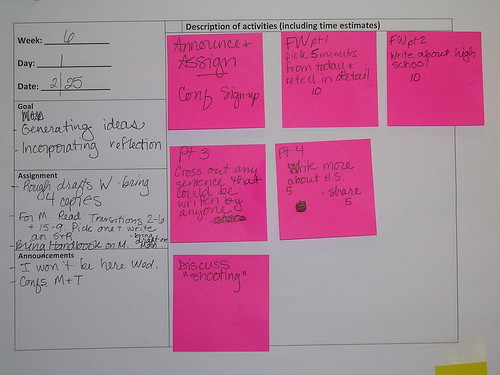LIVEbrary Lesson Plan #9:
"Egyptian History"
Subject: World History
Age Range: 11-15
Grade Level: 6-10
Contents:- Reading
- Assignment
- Quiz
- Discussion Questions
__________________________________________________
READING:"A Traitor in the Temple at Thebes"
an excerpt from the book
RISE OF THE GOLDEN COBRAby Henry T. Aubin
Published by Annick Press
Reprinted here with permission.
~ Introduction ~In the excerpt, below, teenage Nebi survived an attack from the traitorous Lord Nimlot, who had joined the enemies of Egypt's throne, the northern Mesh. At the time -- 734 BCE -- South Egypt was ruled by King Piankhy from the southern Kingdom of Kush. Piankhy's sister, Amonirdis, reigned over South Egypt from the temple at Thebes. As the excerpt opens, Nebi, found barely alive after crossing the desert, is taken by goatherders across the Nile River to the temple at Thebes. He carries a message for princess Amonirdis, "the Divine Adoratrice."
~ The Road to the Temple ~Nebi took in the spectacle through half-closed, feverish eyes.
Thebes had few fortifications, yet its appearance from midriver awed him even more than North Egypt's capital, high-walled Memphis, which he had sailed past with Master Setka.
Here, signs of great wealth were spread everywhere. Estates and villas spread out from the city. Obelisks towered over the center. As the Temple of Amon at Karnak came into view, his eyes widened. It was said to be the biggest building anywhere. Monumental pylons rose above a protective wall. In the rich afternoon light, the yellow stone looked golden.
The villagers lugged the boy through streets lined with open-air stalls and teeming with farmers, slaves, civil servants, and children. Nebi's deprived senses sprang back to life. Aromas of spices and flowers filled his nostrils. He bathed in the sounds -- snatches of animated banter, the cries of vendors, and the giggling of girls.
From knee level, he could see swirling about him tan Egyptians, black Kushites, pale traders from the Middle East, and, here and there, still paler traders such as he had seen in the Delta. He had heard they came from a thickly forested area emerging from barbarism -- Europe.
~ The Captain of the Guard ~The peasants wove their way up an avenue lined with stone sphinxes the size of horses. It led to the entrance of the Karnak temple's outer walls. Carved in limestone above the gate was one of the symbols of the faith, the disk of the sun carried on two great wings.
Guarding the immense bronze doors were a few bare-chested soldiers in red kilts, their number evenly divided between Kushites and Egyptians. At the ends of the tall pikes they held upright, red pennants drooped in the breezeless heat.
The villagers set Nebi on the dusty ground. Bowing and stuttering, the goatherd timidly asked for the captain of the guard.
It took so long for the Kushite officer to emerge from his little office that Nebi wondered if he had to be awakened. But he was a striking, large-boned man, fully a head taller than his soldiers, and broad-shouldered as well.
The captain wore an officer's standard kilt of white pleated linen; two red stripes down each side denoted his rank. His eyes turned downward at the outer corners, giving him a melancholy expression.
Hands on hips, the big man examined the humble trio but said nothing.
Nebi propped himself on an elbow. "Please, sir, get word to Her Holiness the Divine Adoratrice that a messenger from His Excellency Setka is here to see her."
The captain cocked a skeptical eyebrow at the scrawny, blistered speaker. To be a messenger, and particularly a messenger for the royal family, was as prestigious as it was demanding. It was not a job for a ragamuffin.
"Setka?" drawled the captain. "Who is Setka?"
"Her Holiness will know."
The captain looked him in the eye. Nebi held his stare. And held it.
"I'll see," the captain finally said.
When the lanky office returned, he was striding quickly. He clapped for the guards. "Pick him up and follow me," he told two of them.
Nebi put one bony arm over each guard's shoulders. When he turned to thank the goatherd and his neighbor, their mouths were wide open with astonishment. The guards followed the captain through the gate.
~ The Temple of Anon at Karnak ~Inside the walls, it was Nebi's turn to gape. After passing through courtyards and corridors, they entered a hall into which his whole village of 80 houses could have fit. Here, all was dim, cool, and restful.
The guards followed the captain through a forest of pillars, each adorned with colorfully painted carvings of gods, lions, lotuses, and past pharaohs. Nebi craned his neck to look up. Each of the pillars was the equivalent of seven stories high. The sweet haze of incense made this colossal scale seem dreamlike.
They entered a smaller, ornate chamber off to one side. On a raised platform in the room's center, a woman sat on a throne. Next to the platform, with their backs to Nebi, stood three men and two women. A shaft of sunlight angled down on them.
The guards halted in front of the seated princess. She was middle-aged and sturdy, with earnest eyes. Hand cupping her chin, she was presiding over a discussion of some affair of state. A bejeweled collar of many colors spanned her shoulders, and a blue sheath dress left her ebony arms bare. But what caught Nebi's eye was a peculiar gold ornament over her forehead that glinted in the sun shaft. Attached to the gold band encircling her head, it looked rather like a curled index finger.
The guards placed Nebi in a chair in front of the princess. Desiring privacy, she waited until both guards and their captain had departed. Then she said, "What is this about Setka?"
~ The Interrogation of Nebi by Princess Amonirdis ~"Most Holy One," Nebi Said, "His Excellency Setka's last words were that I should see King Piankhy."
"Last words?" she said. "Tell me what has happened to the king's oldest friend!"
"Your Holiness, my master was killed by a traitor after his real mission was discovered."
She leaned forward. "We can trust my advisors and courtiers," she told the youth, gesturing to those on either side of her. "I knew of Setka's mission, but I need to know much more. Explain to me who you are and why you have come to me." Her voice was kind but commanding.
"My name is Nebamon. I am from North Egypt -- from Damanhur, a village in the Delta. My father was Egyptian, a farmer, and my mother is Mesh. I worked for His Excellency."
"In what capacity?" she asked.
"I was his servant -- at first. I felt from the beginning that my master was more than just a merchant from Kush exploring trade possibilities. He came to trust me, and he told me that King Piankhy had commissioned him to uncover what was really happening in North Egypt."
A murmur of interest came from Amonirdis's entourage.
"I know the Delta and its dialect, so I began to act as his guide and interpreter," said Nebi. "I would take him from village to village. He learned that Lord Tefnakht was quietly drafting young men into a large new army."
The princess's eyes widened.
Nebi went on: "Master Setka heard that Tefnakht was meeting other Delta warlords, some of whom had been Tefnakht's enemies until then. He learned that these new allies had amassed a fleet of ships with which they planned to invade the south. In the evening, he would dictate to me his notes for a report intended for the king."
"You can write?" she asked.
"I have received training as a scribe at Sais, Your Holiness. Events kept me from completing my studies."
Amonirdis nodded. "Yes, I thought you sounded well-spoken for a peasant." She looked at him with respect.
Only one of every hundred Egyptians could read and write. Almost all scribes were from privileged backgrounds; they were an elite group who looked after records, one of the most precious things for any administration. No profession was more exalted -- or more challenging. Scribes had to memorize more than a thousand hieroglyphic and cursive characters. Even the powerful "viziers," who ran each Egyptian domain on behalf of its ruler, always came up through the scribal ranks.
"Master Setka's report was for King Piankhy himself. He was murdered so that it could never reach the king."
"Who slew him?"
"The Mesh. They attacked him as he was preparing to return to Napata to give King Piankhy his report. The other witnesses were killed, including the police chief of Khmun and his wife."
The princess glowered.
Nebi plunged on. "Lord Tefnakht has North Egypt's lords on his side, and now he has made one major ally in South Egypt."
"Who?" said Amonirdis with alarm.
"Count Nimlot of Khmun." Nebi did not try to hide his bitterness as he almost spat out the name. "He has abandoned King Piankhy and joined Tefnakht. The person leading the Mesh thugs who murdered Master Setka and his companions was Nimlot himself."
A hush fell over the group on the platform. After a moment a loud sound erupted from among them -- a confident, sarcastic cackle.
The source of the laughter had been standing out of the light and behind the others, so that Nebi had been hardly aware of him.
Now this slender figure strode forward, hands on hips. A cape embroidered in his family colors, brilliant stripes of yellow and green, hung from his shoulders.
It was Nimlot.
# # #
Copyright 2007 by Henry T. Aubin. Excerpted from the book,
Rise of the Golden Cobra. Published by Annick Press, ISBN 9781554510603 (library binding), ISBN 9781554510597 (paperback). Reprinted with permission. For more information, please visit
http://www.annickpress.com. Thank you.
__________________________________________________
ASSIGNMENT"Family Tree"Henry T. Aubin, author of
RISE OF THE GOLDEN COBRA, was inspired to write about the Kush civilization by his adopted son. Henry is Caucasian and one of his four children is Black. A Harvard-educated journalist, former reporter for The Washington Post, and currently a columnist for The Montreal Gazette, Aubin put his research skills to work looking for historic role models for his adopted son.
What Aubin found was an advanced civilization living along the Nile River in Africa that has been nearly forgotten by history books. Kush was known for racial tolerance and advancements in government, the arts, and the sciences. The greatest of all Kush rulers, King Piankhy, was Black, as were most Kushites.
Your assignment is to research your own family's history and tell us about someone you discover who has an interesting story. You don't have to become a genealogist -- chasing down birth and death records -- if you don't feel like it. You can find the story of someone with your same family name and tell their story -- even if they're not related to you.
Who did you find? What kind of life did they lead? What are the most interesting facts you uncovered about him or her? Does learning about this person's life inspire you to try something new? What? Did you discover any other interesting people or family facts during your investigation?
__________________________________________________
QUIZ:NOTE: Quiz answers are available to teachers upon request from LIVEbrary@annickpress.com. Quiz answers will also be revealed during LIVEbrary chats and made a part of chat transcripts.
1) Which word, below, most closely matches the definition of the word, "vizier," as used in the reading?
A. Vizier = a seer, one with clear vision into the future
B. Vizier = an "advisor," one who analyses and reports to the king
C. Vizier = a member of royalty, descended from Amon
D. Vizier = a goatherder
2) Multiple Choice: What race was princess Amonirdis?
A. "White" -- most likely European
B. "Light" -- most likely from North Africa or Arabia
C. "Brown" -- most likely Egyptian
D. "Black" -- most likely from Kush
3) Multiple Choice: Where is Thebes, in relation to Memphis and Napata?
A. Thebes is south of Memphis and north of Napata
B. Thebes is south of both Napata and Memphis
C. Thebes is north of both Memphis and Napata
D. Thebes is north of Memphis and south of Napata
4) Multiple Choice: Can you guess the meaning of the word "Amon" from close examination of the reading?
A. Amon = King, the ruler of the Kingdom of Kush
B. Amon = Priestess. Amonirdis = "high priestess"
C. Amon = Prince. Prince Shebitku is the Amon of Kush
D. Amon = The god who gives the King the right to rule
5) Multiple Choice: What race are the Mesh?
A. "White" -- most likely European
B. "Light" -- most likely from North Africa or Arabia
C. "Brown" -- most likely Egyptian
D. "Black" -- most likely from Kush
__________________________________________________
DISCUSSION QUESTIONS:- Amonirdis ruled South Egypt from the temple at Thebes. She was a Kushite -- a black woman. It was not uncommon to have women holding positions of power in Kush society. Can you name some countries that have had female heads of state? How about Black heads of state? How many can you name?
- In the reading, 14-year-old Nebi is taken to Princess Amonirdis to tell his story. He is called a liar by Count Nimlot -- a member of the royal family. Has anyone accused you of lying when you know you didn't? How did you defend yourself? How did it work out? What advice do you have for Nebi, who must convince the Princess he is telling the truth? His life depends on it.
- In the reading, Nebi says the ruling class of "viziers," or advisors, were drawn from the class of scribes -- those who know how to read and write. Don't you think it's unusual that the rulers were chosen from scribes rather than from military officers, priests or clergy, or blood relations of the current rulers? What profession do most world leaders come from today: teachers, clergy, military, business, lawyers? What's your guess? How can you find out?
- In the reading, Nebi is carried to Thebes by goatherders. Do you remember what it was like the first time you saw a really big city or gigantic skyscraper? How did you get there? What did it feel like? Have you ever been on a working farm where someone tended livestock, such as goats, cows, or chickens? What was that like? If you had to choose between living on a farm or living in a skyscraper, which would you choose? Why?
- In the reading, when Nebi is laid at the temple gates, the people who brought him are silent. Nebi must speak up and ask to see the Princess, even though it's a preposterous request, before the Captain of the Guard retreats back behind the temple gates. Can you remember a time when you did not want to speak up but you had to find the courage to say something, even though you were scared to death? Did you speak up? What happened next? Did it work out okay for you?
__________________________________________________
Copyright 2008 by Annick Press. All rights reserved. Printed here with permission of the publisher. Please request permission from
LIVEbrary@annickpress.com before posting this lesson plan in any public place. Thank you.





















